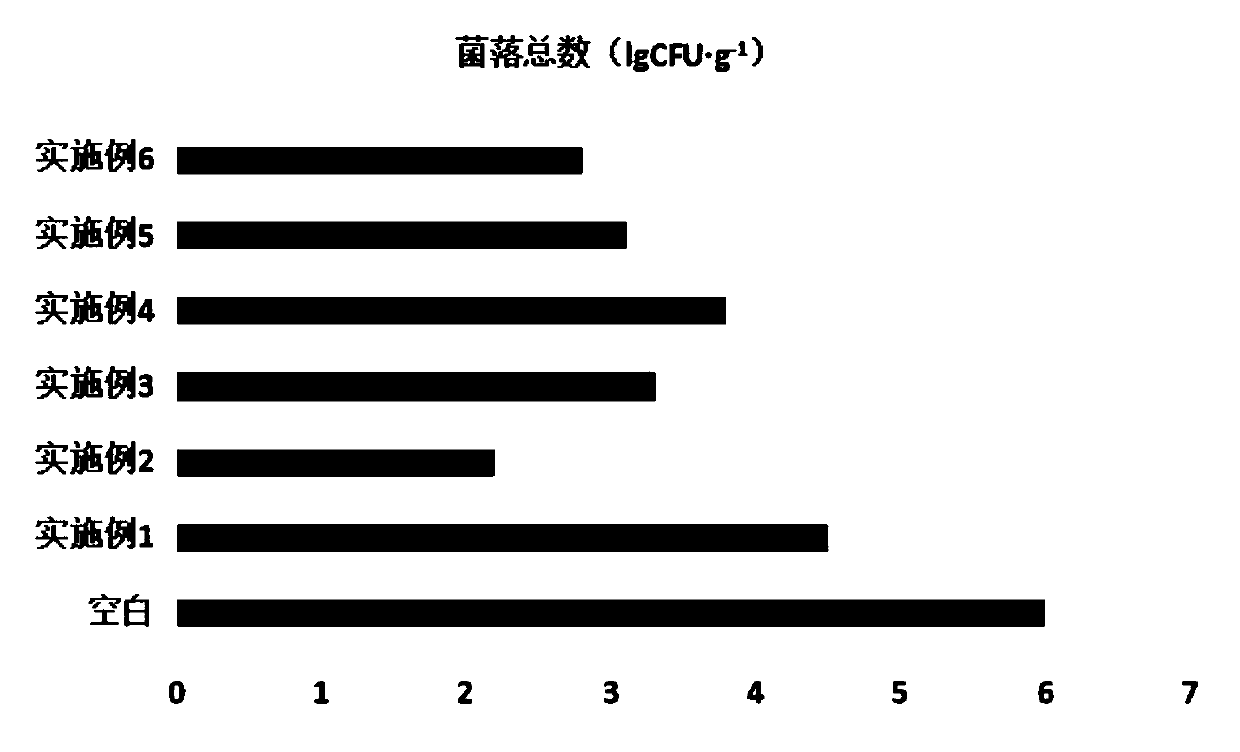Method for extracting antifreeze protein peptide from mussels and application of antifreeze protein peptide in food refrigeration and preservation
A technology of antifreeze protein and mussels, which is applied in the application field of food refrigeration and preservation, can solve the problems of no hydrolyzate dialysis treatment, no consideration of microbial influence, and inability to hydrolyze proteolysis, so as to inhibit the growth of spoilage bacteria, realize diversification, The effect of controlling metabolism
- Summary
- Abstract
- Description
- Claims
- Application Information
AI Technical Summary
Problems solved by technology
Method used
Image
Examples
Embodiment 1
[0032] (1) Wash the mussels, add water, the mass volume ratio of mussels to water is 1:5, and beat the mussel meat.
[0033] (2) For the slurry in step (1), adjust the pH to 8.0 with 0.1mol / L NaOH, take the supernatant after centrifugation, adjust the pH to 3.0 with 0.1mol / L HCl on the supernatant, and centrifuge after standing. Obtain the lower layer of precipitated eggs.
[0034] (3) Dissolve mussel protein in distilled water, add proteinase K, the addition amount is 1% (based on sample protein); hydrolysis time is 1 h; adjust pH value to 5.5; adjust temperature to 35°C; 0.1 mol / L NaOH keeps the reaction pH constant.
[0035] (4) After the hydrolysis reaction, heat the hydrolyzate to 90°C to inactivate the protease, rapidly cool it in an ice-water bath, and then centrifuge it. The supernatant is passed through a dialysis bag with a molecular weight cut-off of 1 kDa, and the permeate is freeze-dried to obtain mussels Antifreeze protein peptide 6.0g.
[0036] (5) The mussel...
Embodiment 2
[0039] (1) Wash the mussels, add water, the mass volume ratio of mussels to water is 1:5, and beat the mussel meat.
[0040] (2) For the slurry in step (1), adjust the pH to 9 with 0.1mol / L NaOH, take the supernatant after centrifugation, adjust the pH to 4.0 with 0.1mol / L HCl on the supernatant, and centrifuge after standing to obtain Precipitate protein in the lower layer.
[0041](3) Dissolve mussel protein in distilled water, add proteinase K respectively, the addition amount is 2% (based on sample protein), the hydrolysis time is 2 h, the pH value is adjusted to 6.5, and the temperature is adjusted to 37 °C. Add 0.1 mol / L NaOH dropwise to keep the reaction pH constant.
[0042] (4) After the hydrolysis reaction, the hydrolyzate was heated to 90 °C to inactivate the protease, cooled rapidly in an ice-water bath and then centrifuged. The supernatant was sequentially passed through a dialysis bag with a molecular weight cut-off of 3 kDa, and the permeate was freeze-dried as...
Embodiment 3
[0046] (1) Wash the mussels, add water, the mass volume ratio of mussels to water is 1:5, and beat the mussel meat.
[0047] (2) For the slurry in step (1), adjust the pH to 11 with 0.1mol / L NaOH, take the supernatant after centrifugation, adjust the pH to 5.0 with 0.1mol / L HCl on the supernatant, and centrifuge after standing. Obtain the protein precipitated from the lower layer.
[0048] (3) Dissolve the mussel protein in distilled water, add proteinase K respectively, the addition amount is 3% (based on the sample protein), the hydrolysis time is 3 h, the pH value is adjusted to 8.0, and the temperature is adjusted to 40 °C. 0.1 mol / L NaOH keeps the reaction pH constant.
[0049] (4) After the hydrolysis reaction, the hydrolyzate was heated to 90 °C to inactivate the protease, cooled rapidly in an ice-water bath and then centrifuged. The supernatant was sequentially passed through a dialysis bag with a molecular weight cut-off of 6 kDa, and the permeate was freeze-dried as...
PUM
 Login to View More
Login to View More Abstract
Description
Claims
Application Information
 Login to View More
Login to View More - R&D
- Intellectual Property
- Life Sciences
- Materials
- Tech Scout
- Unparalleled Data Quality
- Higher Quality Content
- 60% Fewer Hallucinations
Browse by: Latest US Patents, China's latest patents, Technical Efficacy Thesaurus, Application Domain, Technology Topic, Popular Technical Reports.
© 2025 PatSnap. All rights reserved.Legal|Privacy policy|Modern Slavery Act Transparency Statement|Sitemap|About US| Contact US: help@patsnap.com



